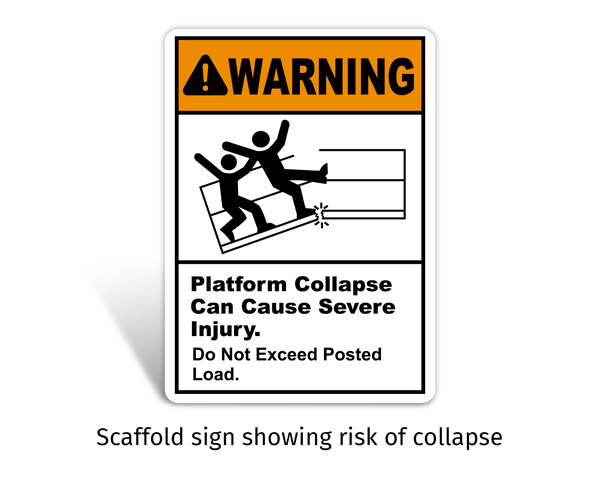Risks During Scaffold Erection
What are the safety risks during scaffold erection?
The safety risks involved during scaffold erection are serious, and often life-threatening. Even when following OSHA scaffolding safety rules, workers can suffer from falls, being struck by falling objects, and scaffolding tip-overs.

Scaffolding accidents during both the erection and dismantling process can be minimized or avoided by following applicable OSHA regulations, including ensuring proper footing of scaffolds, use of personal protective equipment, and use of scaffolding inspection tags at scaffold access points.
Proper inspection of scaffolding, along with training, can also help to minimize safety risks during scaffold erection and dismantling.
Having a competent person available for these inspections and to supervise work is another necessary level of risk prevention.
Some risks associated with scaffold erection stem from improperly supported work platforms and platforms that have been overloaded beyond the maximum capacity. These issues can be spotted during inspection, and if not fixed, can increase the risk of falling from the structure.
Other fall-related risks include bracings being insufficient or unsound and points of access, such as ladders, being incorrectly or insufficiently secured to the scaffolding.
Any unsafe scaffolding, whether during the process of erection, dismantling, or use, should be marked unsafe for use using scaffolding tags and blocked off from use until repairs and inspection can ensure that the found issues have been fixed.
What is OSHA?
OSHA is the Occupational Safety and Health Administration – a public health agency that is part of the Department of Labor. OSHA sets and enforces workplace safety regulations. Learn more here.
What do I need to pass an OSHA inspection?
There are many elements of a safe workplace that factor into passing an OSHA inspection. Dependent on your industry, the posting of official safety signs, use of protective equipment, and proper training could help in successfully passing an inspection. Learn more here.
What happens during an OSHA inspection?
During an OSHA, inspectors will review previous records, inspect potential on-site hazards, and interview employees. OSHA’s inspections are prioritized by how potentially hazardous a workplace might be to workers. Learn more here.
SafetySign.com does not recommend or specify the use of a specific safety sign because it does not have knowledge of the hazard(s) our customers are identifying. It is the customer’s sole responsibility to identify the hazard(s) that may be present and select one or more signs (stock or custom) that accurately identify their specific hazard(s) and complies with any applicable federal, state or local laws or regulations, any worksite specific rules or regulations and/or any applicable safety standards (including, without limitation, ANSI and/or OSHA standards). SafetySign.com disclaims any and all liability (excluding liability for our Product Warranty contained in our Terms and Conditions) for any sign selected by a customer and shall not be responsible for any personal injury or property damage resulting from the use of signs purchased from it or for the independent interpretation made of any applicable federal, state or local laws or regulations, any worksite specific rules or regulations, and/or any applicable safety standards (including, without limitation, ANSI and/or OSHA standards). Customer shall indemnify and hold SafetySign.com and its corporate parent and its officers, directors and affiliates harmless from and against any and all claims, loss or expense (including attorneys’ fees) arising from or related to the purchase and use by customer or any third party of any sign purchased by customer from SafetySign.com.
